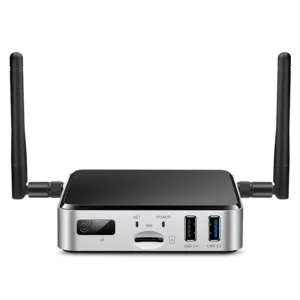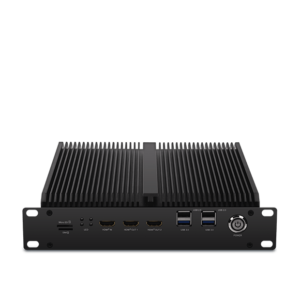The Impact of Operating AI on Edge Devices
The Impact of Operating AI on Edge Devices
Blog Article
The Affect of Running AI on Side Devices
Real-World Applications of AI on Edge Units
Artificial intelligence (AI) is no more restricted to the sphere of large, centralized information centers. Thanks to breakthroughs in engineering, side products now perform a vital role in deploying AI right wherever knowledge is generated. But what does AI on edge products mean, and how come it creating this type of news? Here, we'll discover how arm edge ai works in the real world through side products and reveal their wide range of realistic applications.

What's AI on Side Devices?
AI on side products refers to deploying artificial intelligence algorithms on products like smartphones, cameras, drones, or IoT sensors. These devices do not need usage of centralized machines for running data; as an alternative, they conduct evaluation and decisions locally, creating the procedure quicker, more efficient, and often more secure.
The "edge" here simply describes computing done near to or at the source of information era, rather than counting on the cloud. This change is driven by the needs for real-time knowledge handling and the necessity to minimize latency, increase privacy, and lower bandwidth usage.
Important Real-World Purposes of Edge AI
1. Clever Surveillance
AI-powered cameras built with facial acceptance, action detection, and anomaly recognition are transforming detective systems. Edge products in this domain may analyze movie streams in real-time to spot dubious actions, eliminate false sensors, and enhance public safety. As an example, AI methods may identify strange movements and attentive authorities straight away without the necessity to deliver video data to a main machine for analysis.
2. Healthcare Tracking
Wearable devices and lightweight medical gear are leveraging m.2 ai accelerator for handling wellness data more efficiently. Edge-based AI in units like wellness trackers and smartwatches screens users' vitals, such as heart rate, air degrees, or blood stress, in real-time. These systems analyze information domestically and give instant feedback, paving the way for quicker treatment all through emergencies.
Beyond wearables, sophisticated medical imaging units built with on-device AI may detect signs of disorders like cancer, enabling earlier in the day diagnoses even yet in distant areas without internet connectivity.
3. Autonomous Vehicles
Self-driving cars are among the absolute most well-known samples of side AI in action. With detectors, cameras, and LiDAR programs providing as data places, AI computations take position onboard these cars to produce split-second decisions. From finding pedestrians and limitations to moving city streets, side AI assures that the automobile operates reliably and efficiently. The real-time running capability of side products eliminates the reliance on high-latency cloud methods, ensuring protection in life-critical scenarios.
4. Retail Analytics
Edge devices in retail settings are helping businesses analyze client behavior. Smart shelves and AI-equipped cameras can detect client choices, monitor stock, and also modify in-store activities in actual time. The data generated from these units assists merchants make knowledgeable decisions, improve client satisfaction, and improve stock management.

5. Commercial IoT
Factories and professional crops are adopting side AI to revolutionize their monitoring and automation processes. AI-powered receptors on machinery discover possible errors long before they result in costly failures. Predictive preservation pushed by edge AI reduces downtime, increases production, and guarantees safety on the production floor.
6. Customized Experiences in Client Devices
Your smartphone is a perfect example of how edge AI personalizes person experiences. Features such as style personnel, flexible camera options, and on-device language translation use real-time AI to react to person wants without giving sensitive and painful data to outside servers. That fosters both comfort and privacy for the conclusion user.
The Growing Impact of Edge AI
The adoption of AI on edge devices remains to rise, pushed by industries' increasing need for low-latency, real-time research, and larger knowledge privacy. Its programs are reshaping industries which range from healthcare and automotive to community protection and retail. By adding AI's energy nearer to wherever knowledge is produced, edge units aren't only improving performance but additionally demonstrating the unlimited potential of innovation in the present linked world. Report this page